
How to Use dh11: Examples, Pinouts, and Specs
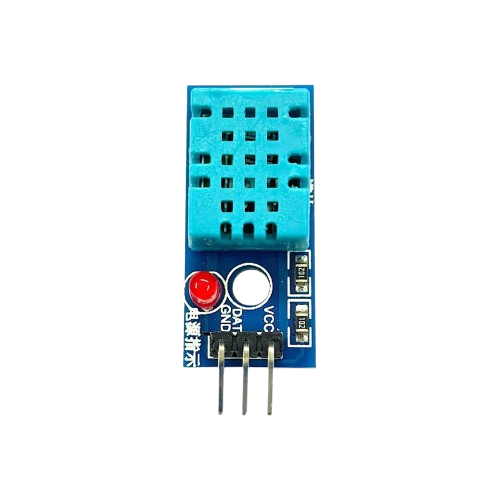
 Design with dh11 in Cirkit Designer
Design with dh11 in Cirkit DesignerIntroduction
The DHT11, manufactured by ME with part ID "UNO," is a basic, low-cost digital temperature and humidity sensor. It provides accurate readings of temperature in Celsius and humidity in percentage. The DHT11 is widely used in applications requiring environmental monitoring due to its simplicity and reliability. It communicates via a single-wire digital interface, making it easy to integrate into microcontroller-based projects.
Explore Projects Built with dh11
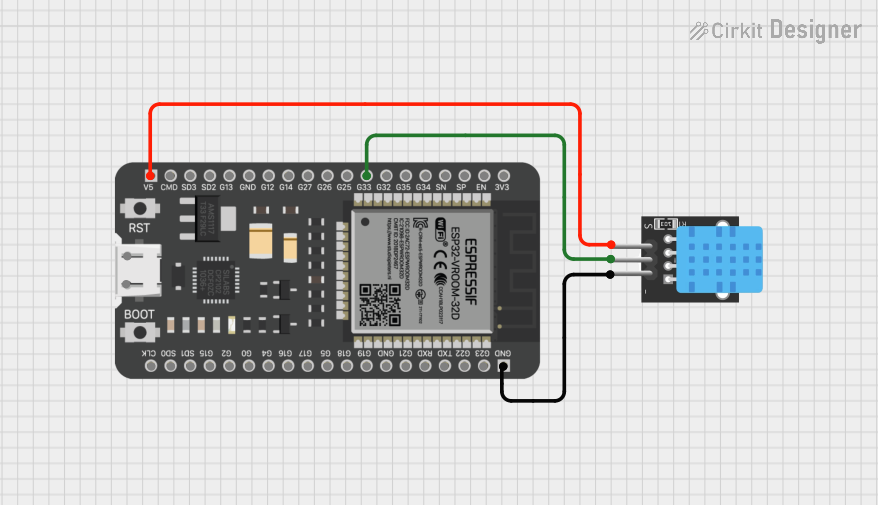
 Open Project in Cirkit Designer
Open Project in Cirkit Designer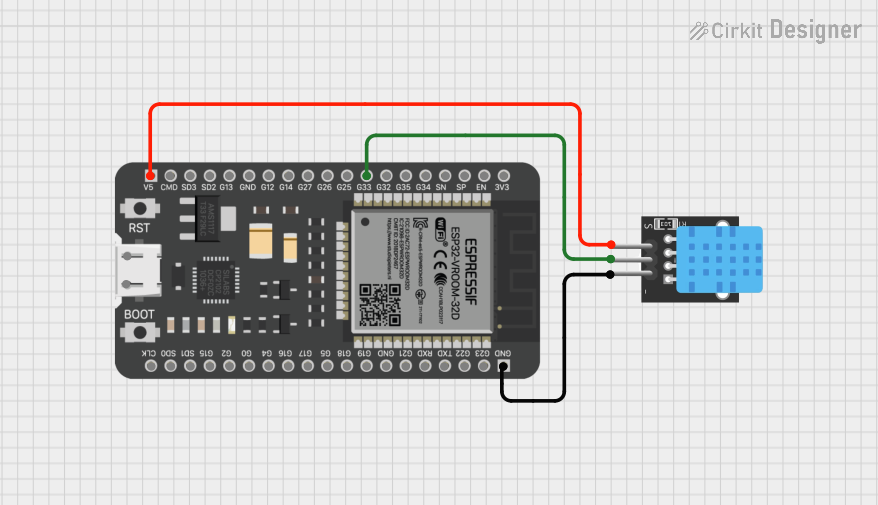
 Open Project in Cirkit Designer
Open Project in Cirkit Designer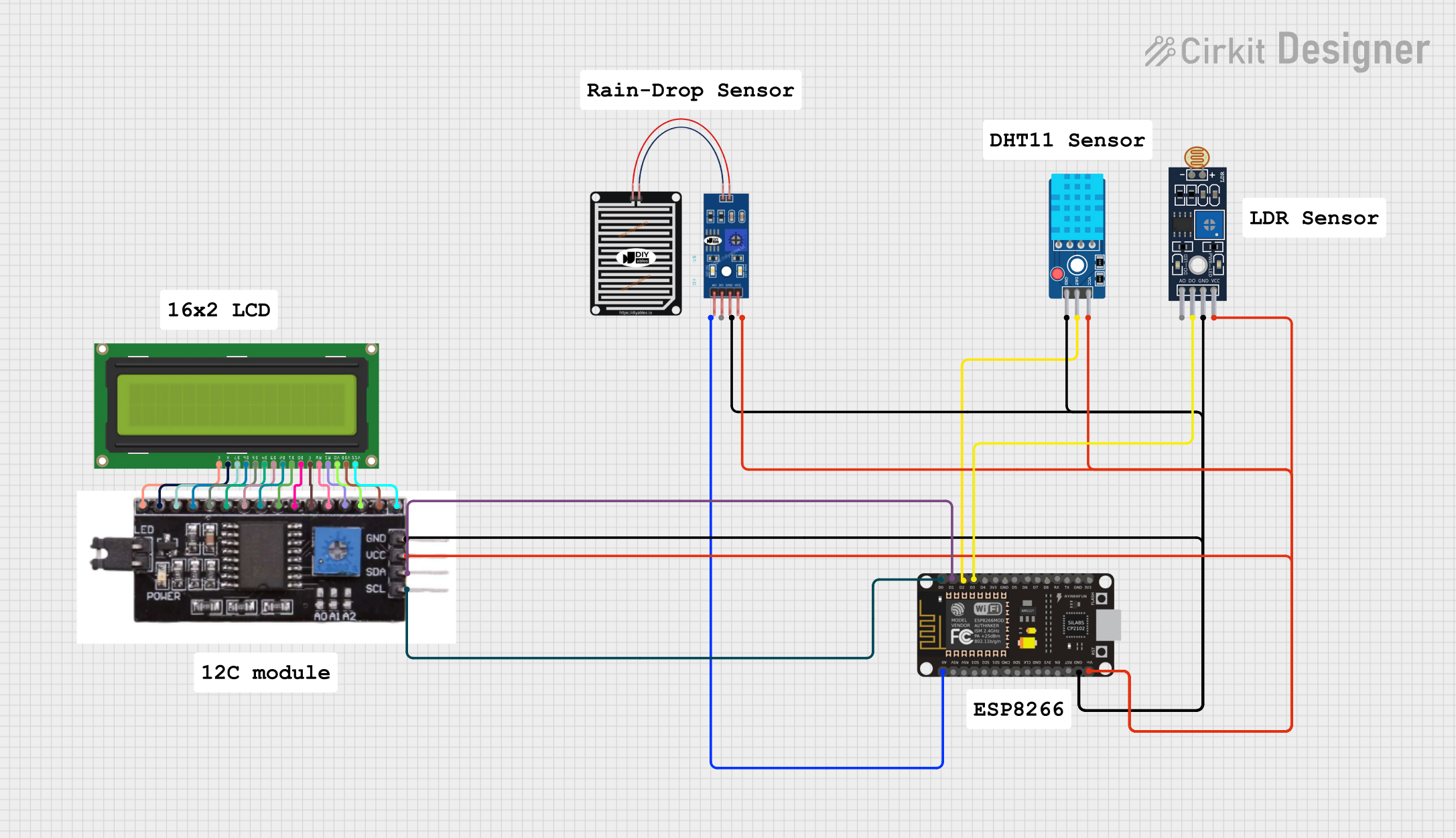
 Open Project in Cirkit Designer
Open Project in Cirkit Designer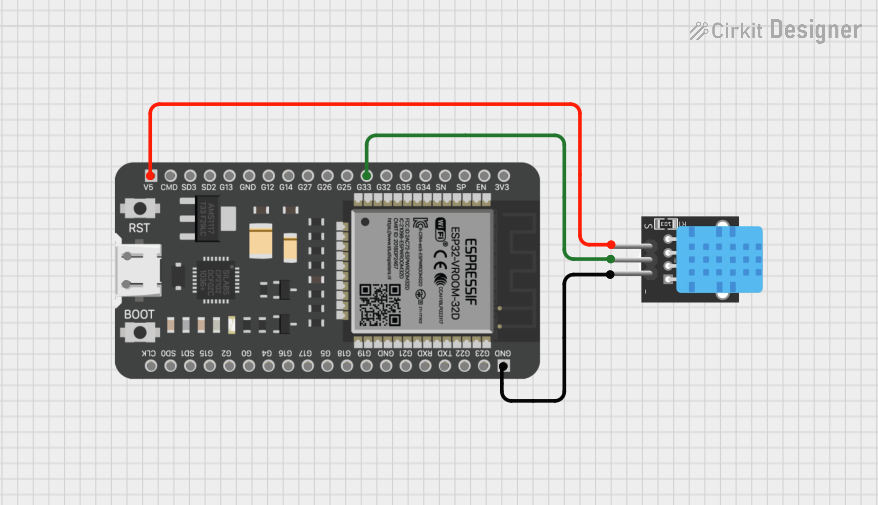
 Open Project in Cirkit Designer
Open Project in Cirkit DesignerExplore Projects Built with dh11

 Open Project in Cirkit Designer
Open Project in Cirkit Designer
 Open Project in Cirkit Designer
Open Project in Cirkit Designer
 Open Project in Cirkit Designer
Open Project in Cirkit Designer
 Open Project in Cirkit Designer
Open Project in Cirkit DesignerCommon Applications and Use Cases
- Weather monitoring systems
- Home automation and HVAC control
- Greenhouse and agricultural monitoring
- IoT (Internet of Things) devices
- Educational projects and prototyping
Technical Specifications
The DHT11 sensor is designed for low-power, high-accuracy environmental sensing. Below are its key technical details:
| Parameter | Value |
|---|---|
| Operating Voltage | 3.3V to 5.5V |
| Operating Current | 0.3mA (measuring), 60µA (standby) |
| Temperature Range | 0°C to 50°C |
| Temperature Accuracy | ±2°C |
| Humidity Range | 20% to 90% RH |
| Humidity Accuracy | ±5% RH |
| Sampling Period | 1 second |
| Communication Interface | Single-wire digital |
Pin Configuration and Descriptions
The DHT11 has four pins, but only three are typically used in most applications. Below is the pinout:
| Pin Number | Name | Description |
|---|---|---|
| 1 | VCC | Power supply (3.3V to 5.5V) |
| 2 | DATA | Digital data output (connect to microcontroller) |
| 3 | NC | Not connected (leave unconnected) |
| 4 | GND | Ground (0V reference) |
Usage Instructions
How to Use the DHT11 in a Circuit
- Power the Sensor: Connect the VCC pin to a 3.3V or 5V power source and the GND pin to ground.
- Connect the Data Pin: Attach the DATA pin to a digital input pin on your microcontroller. Use a 10kΩ pull-up resistor between the DATA pin and VCC to ensure reliable communication.
- Read Data: Use a compatible library or write custom code to read temperature and humidity data from the sensor.
Important Considerations and Best Practices
- Sampling Rate: The DHT11 has a sampling period of 1 second. Avoid reading data more frequently to prevent communication errors.
- Placement: Place the sensor in an area with good airflow for accurate readings. Avoid direct exposure to water or extreme temperatures.
- Pull-Up Resistor: Always use a pull-up resistor on the DATA line to ensure stable communication.
- Cable Length: Keep the cable length between the sensor and microcontroller as short as possible to minimize signal degradation.
Example Code for Arduino UNO
Below is an example of how to use the DHT11 with an Arduino UNO. This code uses the popular DHT library.
// Include the DHT library for easy communication with the sensor
#include <DHT.h>
// Define the pin connected to the DHT11 DATA pin
#define DHTPIN 2
// Define the type of DHT sensor (DHT11 in this case)
#define DHTTYPE DHT11
// Initialize the DHT sensor
DHT dht(DHTPIN, DHTTYPE);
void setup() {
// Start the serial communication for debugging
Serial.begin(9600);
Serial.println("DHT11 Sensor Initialization");
// Initialize the DHT sensor
dht.begin();
}
void loop() {
// Wait a second between readings (DHT11 requires a 1-second delay)
delay(1000);
// Read temperature and humidity from the sensor
float humidity = dht.readHumidity();
float temperature = dht.readTemperature();
// Check if the readings are valid
if (isnan(humidity) || isnan(temperature)) {
Serial.println("Failed to read from DHT sensor!");
return;
}
// Print the readings to the Serial Monitor
Serial.print("Humidity: ");
Serial.print(humidity);
Serial.print(" %\t");
Serial.print("Temperature: ");
Serial.print(temperature);
Serial.println(" °C");
}
Troubleshooting and FAQs
Common Issues and Solutions
No Data or Incorrect Readings:
- Ensure the pull-up resistor (10kΩ) is connected between the DATA pin and VCC.
- Verify that the sensor is powered with the correct voltage (3.3V to 5.5V).
- Check the wiring for loose or incorrect connections.
Frequent Communication Errors:
- Ensure the sampling period is at least 1 second between readings.
- Reduce the cable length between the sensor and microcontroller to minimize signal loss.
Sensor Not Responding:
- Confirm that the DATA pin is connected to the correct digital input pin on the microcontroller.
- Test the sensor with a different microcontroller or power source to rule out hardware issues.
FAQs
Q: Can the DHT11 measure negative temperatures?
A: No, the DHT11 can only measure temperatures in the range of 0°C to 50°C.
Q: Can I use the DHT11 outdoors?
A: The DHT11 is not waterproof and should not be exposed to direct rain or extreme environmental conditions. Use a protective enclosure if deploying outdoors.
Q: What is the maximum cable length for the DHT11?
A: The recommended maximum cable length is 20 meters, but shorter lengths are preferred for better signal integrity.
Q: Can I use the DHT11 with a 3.3V microcontroller?
A: Yes, the DHT11 operates within a voltage range of 3.3V to 5.5V, making it compatible with 3.3V systems.